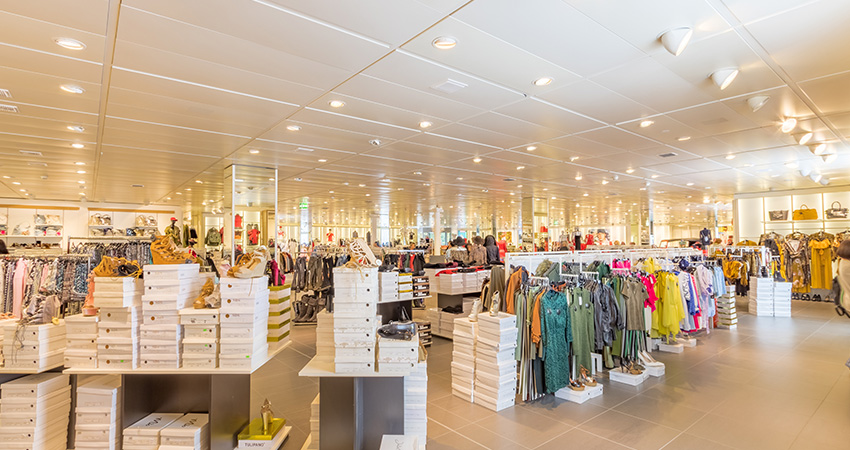Retailers and their customers look for brands that are sincere, consistent and original (credit: Alexander Kovacs on Unsplash)
Retailers are savvier than ever when selecting the brands they entrust with their precious shelf space. Whether a big box store or niche retailer, success hinges on partnering with brands that can stand out, offer a compelling fit for the retailer and its customer base and bring in repeat business that deliver a steady stream of sales.
The stakes – and challenges – are especially high right now.
For brands, meeting these criteria is often easier said than done. Success means entering a competitive new market and proving your brand will thrive in an environment where your products are sold right next to competitors. It also means scaling effectively. Retailers wouldn’t be taking your calls if your brand didn’t already command an audience and carry strong customer expectations. Now you just need to show that you can maintain the quality of your product and your customer experiences as you expand retail channels. Here’s what to keep in mind.
Make Your Brand Stand Out
The same techniques you use to develop your brand and your audience make you an attractive partner for retailers. They want to see mature brand identities, that you know who you are and who your customers are. Standing out from a crowded field of competitors takes a clear commitment to a core mission and values, and consistent messaging with a defined target audience. Put simply: retailers and customers look for brands that are sincere, consistent and original.
Be sincere
If a brand provides the same canned replies to every customer on social media, that decision to eschew more personal attention communicates less sincerity about delivering on its promises. Customers expect more than a robotic response, and retailers may get the impression you’re no ready for prime time. Instead, your brand should demonstrate sincerity via a unique voice and personality that is recognizable across channels. Brand interactions are opportunities to stand out. Be interesting and memorable, and customers and retailers will feel they know your brand.
Be consistent
A loyal brand following is built on consistency. Be predictable and familiar so that customers can trust your brand and know what to expect. Consistent messaging is especially crucial across omnichannel buying experiences. Retailers need to know that customers who research a brand’s products online and then visit their store will recognize a consistent signature brand identity across those experiences.
Be original
Standout brands have value statements all their own which go beyond clichés and permeate their messaging and experiences. This is challenging work, where success often arrives with growth – getting to know customers and their pain points and then growing with them. Customers involved with a brand throughout its growth phase and formation of its unique perspective are often tremendously loyal. That originality and loyal customer base shows retailers what they want to see when assessing a brand’s strengths.
Bring it together with standout brand assets
A brand can’t be particularly sincere, consistent or original if it relies on generic assets like stock photos. Consumers will see straight through any artificial presentation. Associating authentic customer-driven imagery with your products is critical to standing out, helping customers imagine how your products will fit into their day-to-day lives.
For example, a skincare brand may post photos from actual users that have tagged them on social media, harnessing fully authentic customer-driven content that speaks for itself. Retailers that observe such brand practices know a partnership means gaining effective, sophisticated marketing capabilities that will help move products off shelves.
Find Retailers That Offer the Best Fit
Shoppers at Walmart won’t find luxury suits. Whole Foods isn’t going to carry non-organic Doritos. Both brands and retailers need to choose their partnerships strategically. You need to know exactly who your customers are, and thoroughly research retailers to know their customers and audiences. A compelling long-term partnership is one where retailers trust your brand to fit with their customers, and perhaps see the potential to expand their audience.
For example, window and door manufacturer Pella previously sold only to wholesale distributors. However, in researching its retail market opportunities, the company found that shoppers at Home Depot were mainly DIY-type homeowners and small contractors. Recognizing an opportunity, Pella approached Home Depot with a simplified, cost-effective new product line, tailored to homeowners. The mutual success story of their ongoing partnership demonstrates the power of understanding a retailer’s business and how to fit within it.
Offer Marketing Support and a Steady Stream of Repeat Customers
Brands with experience selling to big box retailers will present annual marketing plans, outlining their plans to market products in places customers will see. The brand provides a detailed calendar with schedules for things like paid social, digital ads and billboards geographically and strategically located. This presentation leaves no doubt they’re a strong partner, while ensuring that store customers will already know them and what their products stand for.
Brands new to retail can adopt this type of practice as well. Pitch yourself as your target retailer’s goal-oriented teammate. Understand their goals and explain how your partnership and products will help achieve them. Make it clear what your brand has that your competitors don’t, including your loyal customer base. It’s an older statistic but true as ever: Bain famously calculated that a 5% increase in customer retention drives a 25-95% increase in profits, because 65% of purchases come from repeat customers.
Lynn Herman is a senior marketing manager at Image Relay

